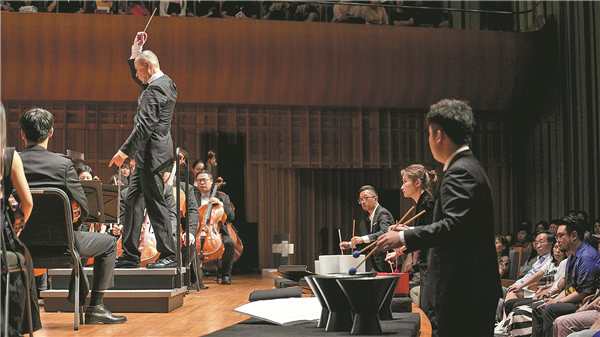

In the opera, Qinshihuang commissions a musician, Gao Jianli, to compose an anthem for his empire. When he discovers that his daughter has fallen in love with Gao, Qinshihuang, despite appreciating Gao's musical talent, becomes angry because he wants his daughter to marry a general for political reasons.
In 2017, when The Metropolitan Museum of Art put on a large exhibition, Age of Empires: Chinese Art of the Qin and Han Dynasties (221 BC-AD 220), the museum commissioned a new work from Tan based on the music from the opera, which became Symphony of the First Emperor.
"Basically, the version we perform in Xi'an is the same as the one for the exhibition of The Metropolitan Museum of Art. But since most of the musicians of the Xi'an Symphony Orchestra are from Xi'an, which gives them a special connection with the composition, the performance will be unique," says Tan, adding that the performance in Xi'an involves some special musical instruments created exclusively for the city — ceramic percussion instruments.
Symphony of the First Emperor features seven chapters, each named after different colors and wu xing (the five elements in ancient Chinese philosophy). For example, the first chapter is called Black and White (Yin-Yang Master), the second chapter is called Red (Emperor's Dance) and the fifth chapter is called Purple (Revenge).
Tan attributes the naming of the chapters to director Zhang, who was born in Xi'an.
"When we worked on the opera, Zhang told me about lao san se, or the three colors of Shaanxi, which are black, white and red. These colors are often used by people in Shaanxi and also appear in his films. He also inspired Emi Wada, who designed the costumes for the opera, to use the traditional tie-dyeing technique of Shaanxi in the making of the costumes," recalls Tan.
Lao san se was also used during the premiere of Symphony of the First Emperor in Xi'an. Ceramic percussion instruments were painted black, white and red, with percussionists playing the instruments in front of the orchestra.
"Those percussion instruments were from books about music of the Qin Dynasty that Tan had read," says Lu Shan, principal percussionist of Xi'an Symphony Orchestra. He notes that the way of playing the instruments is quite different from playing contemporary percussion instruments.
"We kneel down on the stage and play the instruments, which is a new experience," Lu explains.